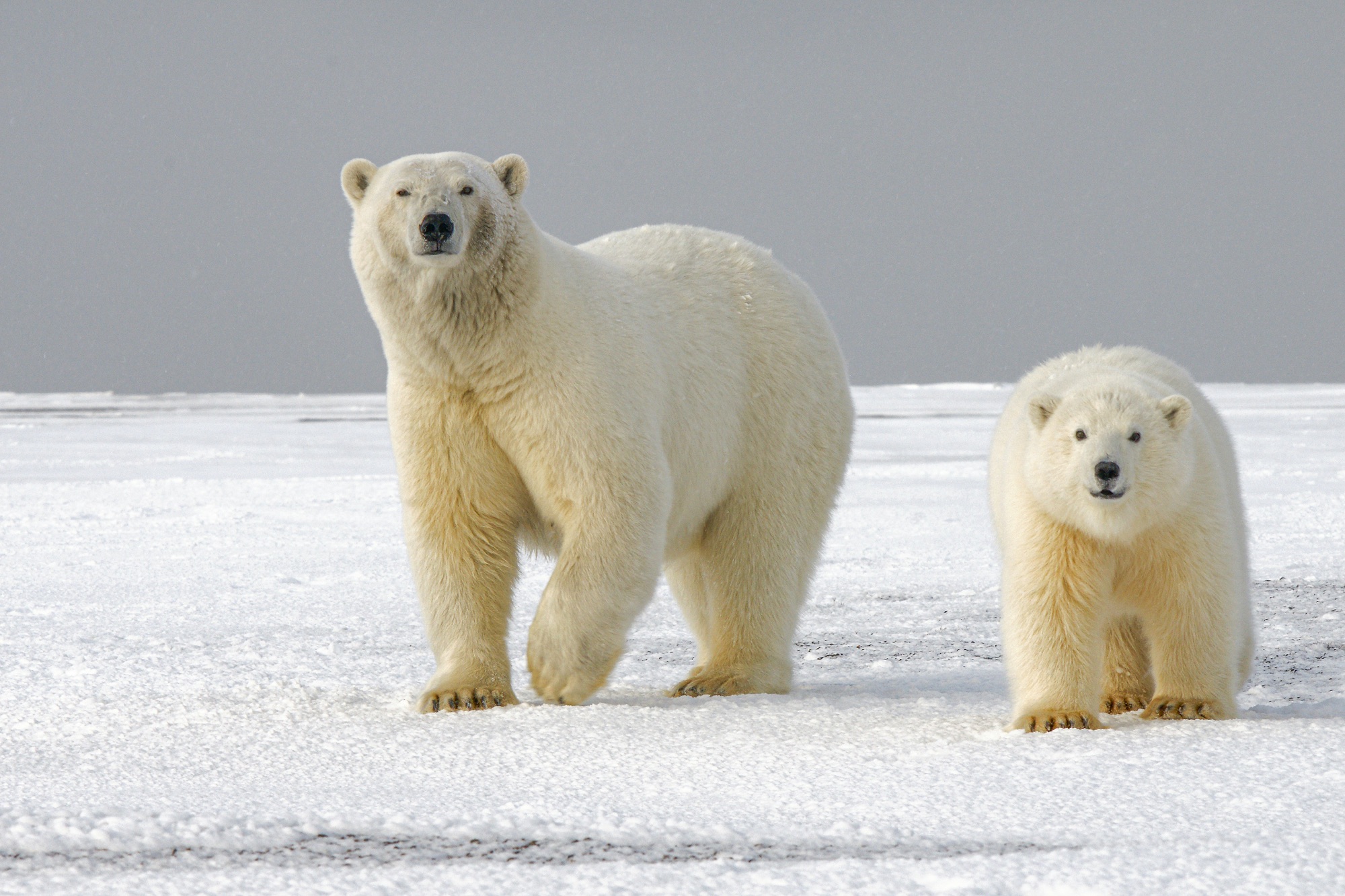Polar bears are among the most iconic animals of the Arctic, known for their incredible ability to survive in one of the coldest environments on Earth. With temperatures in the Arctic often plunging below -40°F (-40°C) in the winter, polar bears have evolved a range of physiological and behavioral adaptations that enable them to stay warm and thrive in such extreme conditions.
In this article, we’ll explore the various ways polar bears maintain their body heat and survive the harsh Arctic cold.
1. Thick Fur
One of the most important adaptations that helps polar bears stay warm is their dense fur. Polar bears have two layers of fur: a dense undercoat that traps warm air close to their bodies, and longer guard hairs that help repel water and ice. The outer layer of fur is transparent but appears white because it reflects visible light, allowing the bears to blend into their snowy surroundings.
This fur provides excellent insulation against the freezing temperatures, acting like a thermal blanket that prevents body heat from escaping. Even when temperatures plummet, the trapped air in the bear’s fur helps keep their skin warm and insulated. Additionally, polar bears shed their fur and grow thicker coats during colder months, further enhancing their ability to withstand the cold.
2. Thick Layer of Blubber
Beneath the fur, polar bears have a thick layer of fat known as blubber, which can be up to 4.5 inches (11.5 cm) thick. This blubber layer serves as a vital insulation barrier, especially when polar bears are swimming in icy waters or exposed to extreme cold. Blubber not only insulates against the cold but also serves as an energy reserve during times when food is scarce, particularly in winter.
Blubber is especially important when polar bears are in the water. Unlike air, water conducts heat much more effectively, making it more challenging to retain body warmth while swimming. The thick blubber layer helps minimize heat loss in cold water, allowing polar bears to hunt seals and move between ice floes without becoming hypothermic.
3. Black Skin for Heat Absorption
Although polar bears appear white due to their fur, their skin underneath is actually black. This black skin plays a crucial role in absorbing heat from the sun. In the Arctic, sunlight is often limited, especially during the winter months when the sun may not rise at all for several weeks. However, during the spring and summer, when the sun is low in the sky, the black skin of polar bears absorbs as much heat as possible, helping to warm their bodies even in freezing conditions.
This adaptation is particularly useful when polar bears are resting or lying in the sun, as it allows them to soak up heat and conserve energy.
4. Compact Body Shape
Polar bears have a relatively compact body shape compared to other bear species, which helps reduce the amount of surface area exposed to the cold. Their short ears and tails minimize heat loss from extremities, while their large, rounded bodies help retain heat more effectively. This type of body shape, known as the Bergmann’s Rule (where animals in colder climates tend to have larger body masses and smaller extremities), allows polar bears to conserve body heat and maintain a stable core temperature.
Their large paws, while useful for walking on ice and swimming, also help distribute their weight on the snow, reducing the risk of sinking into the snow and ice. This helps them stay mobile in cold environments without expending too much energy.
5. Behavioral Adaptations
In addition to physical adaptations, polar bears also use behavioral strategies to stay warm in the Arctic cold. One such behavior is digging dens or using snowbanks as windbreaks. Polar bears, particularly pregnant females, will dig dens in the snow to shelter themselves from the wind and cold. These dens trap heat and help maintain a warmer microclimate, providing a place to rest and conserve energy.
During colder periods, polar bears will reduce their activity levels to conserve energy, spending more time resting or huddling in sheltered areas. By limiting movement, they reduce the amount of heat lost through physical activity and keep their body temperature stable.
6. Efficient Circulatory System
Polar bears also have a highly efficient circulatory system that helps regulate their body temperature. Their blood vessels are designed to minimize heat loss, particularly in their extremities, such as paws and ears. A mechanism known as countercurrent heat exchange allows warm blood flowing from the body’s core to heat up the cooler blood returning from the extremities, preventing the polar bear from losing too much heat through its paws or nose.
This system helps polar bears maintain warmth in critical areas of their bodies while still allowing them to walk on ice and snow without freezing their feet or losing core body heat.
7. Adaptations for Swimming in Cold Water
Polar bears are excellent swimmers, often traveling long distances in frigid Arctic waters in search of food. Swimming in cold water poses a significant challenge, as it can cause rapid heat loss. However, polar bears have adapted to handle this by using their thick blubber to insulate themselves from the cold and by maintaining a streamlined body that reduces resistance in water.
Their large, webbed paws act as paddles, allowing them to swim efficiently, while their strong forelimbs help them navigate through icy waters. After swimming, polar bears will often shake off excess water and fluff up their fur to trap air and restore insulation.
8. Fat-Rich Diet
Polar bears rely on a fat-rich diet, primarily consisting of seals, to maintain their thick layers of blubber and stay warm. Seal blubber is high in calories and fat, providing the energy polar bears need to build up their own fat reserves and fuel their bodies. During the hunting season, particularly in the spring and summer, polar bears will eat large quantities of seal blubber to store fat for the winter months when food is scarcer.
This ability to build and maintain fat stores is crucial for survival in the harsh Arctic environment, where temperatures can drop drastically, and food may be difficult to find for long periods.
9. Adaptation to Fasting
During the colder months when food is less abundant, polar bears have evolved to survive long periods of fasting. They can live off the fat reserves they’ve accumulated during the more plentiful summer and fall months. This fasting ability allows them to conserve energy and body heat when hunting becomes more difficult. Pregnant females, in particular, will fast for several months while in their dens, relying solely on their fat reserves to nourish themselves and their cubs.
Conclusion
Polar bears are incredibly well-adapted to survive in the Arctic, thanks to a combination of thick fur, blubber, black skin, and behavioral strategies that help them conserve heat and maintain a stable body temperature. Their physiological adaptations, such as an efficient circulatory system and the ability to build and store fat, are complemented by their strategic behaviors, such as denning and reducing activity levels in extreme cold.
These adaptations allow polar bears to thrive in one of the most extreme climates on Earth, where temperatures can plummet to deadly levels and food can be scarce. Their unique combination of physical and behavioral traits enables them to not only survive but also dominate their icy habitat as the Arctic’s top predator.




